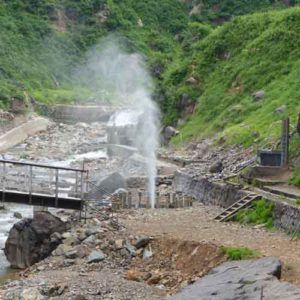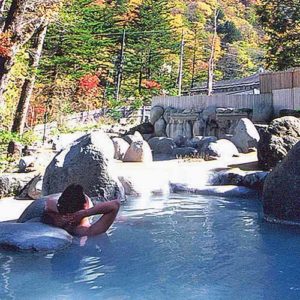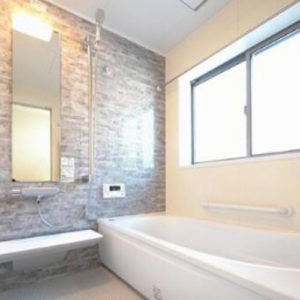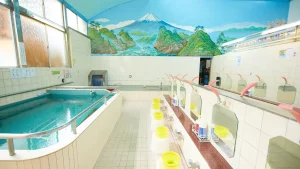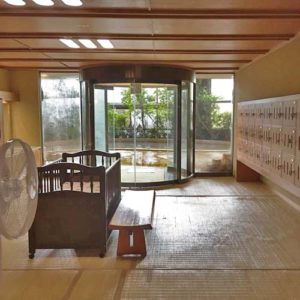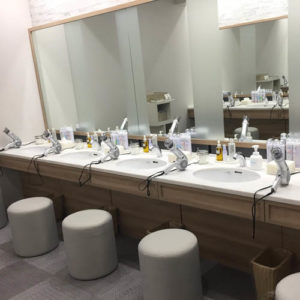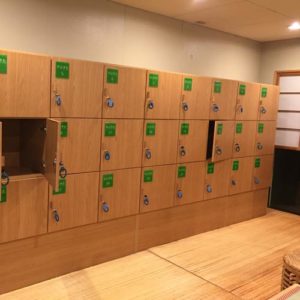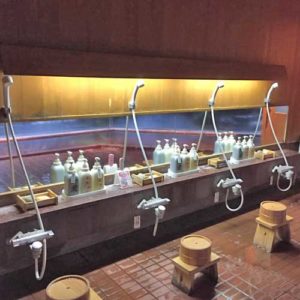Japanese unique bath (onsen) culture
It is known that Japan has a rather unique bath (onsen) culture. In this blog, we talk about;
- How did the Japanese bath culture start?
- Why bathing is so popular in Japan?
- Different types of baths in Japan, and
- How to enjoy Japanese bath
Europeans had a form of public bath-based culture on the thermae of the Roman Empire. However today a shower is more common as a daily personal hygiene practice in many western countries.
For Japanese, nothing is better than soaking in a hot tub at the end of each day. We will give you some background into this daily ritual, and you can participate in the culture next time when you are in Japan!
How did the Japanese bath culture start?
History of Japanese bathing culture
In Japanese history, the bathing culture came from China with Buddhism in the 6th century. In Buddhism it was believed that taking a bath was good for health, and removing impurities was an important task for religious services.
There were baths in temples, and they were made available to ordinary people in the community. Because of this religious background, the bathing culture took root in Japan. Bathing originally took the form of a sauna, later developing into public baths that appeared in the Edo era. After the world war II, an influx of western cultures together with an advancement in building technology brought a concept of a household bathroom inside Japanese houses and apartments. Today, most homes have their own bathroom and bath.
Why bathing is so popular in Japan?
There are some theories why Japanese people like bathing so much. For one, Japan’s water is soft (as opposed to hard water found in most areas of Europe) and it is gentle on our skin and hair.
Another reason is climate. Japan’s summer is hot and humid, and houses are built with good ventilation. So these same houses are cold in winter. The Japanese winter is cold and dry, so soaking in hot water is a good way to warm up inside and keeping skin moist on the outside. Taking a bath and warming the body is believed to have many health benefits such as improving circulation and metabolism, alleviating fatigue, and easing body stiffness. Relaxing and refreshing in bath is also good for releasing stress.
An environment to support the Japanese bathing
Above all, the main difference between Japan an other countries when it comes to bathing is the availability of abundant thermal mineral groundwater. Japan is a country well known for its volcanic activity. Volcanoes sometimes cause natural disasters, but they bring the blessings of nature, such as pure water, beautiful landscapes and hot springs. There are many places that gush hot spring water all over Japan.
-The number of hot spring towns and villages is about about 3,000!
-The total number of spring water sources is about 28,000
-The amount of water discharge is about 2,528,971 l/minute *Total of artesian and pumped out artificially
*Reference: Ministry of the Environment Government of Japan HP
Different types of bath in Japan
Onsen
The water used in an onsen is natural geothermal spring water containing minerals. Most of the onsen facilities are public, however, there are some private houses that are connected to onsen water. Onsen baths are usually found in onsen towns or villages at a ryokan (Japanese style inn) where they are available for their guests to use. Also there are many public bath available to day-trippers. Onsen baths can be either indoor or outdoor, often they take advantage of views outside.
I feel
Sento is a type of Japanese communal bathhouse where customers pay to use them. Before a private bath at home become the norm, everybody went to their local sento for a bath, and the sento was very much a part of the community. These day, people go to a sento when their home bath is unavailable, or when they feel like having a bath with large space or use other facilities such as a sauna.
Unlike at an onsen, sento water is heated tap water and does not contain natural minerals. A sento often has more than one large bath tub with different temperature water, or with different features, most sento have indoor bath onl.
Super Sento
A super sento is like a theme park (of baths). In addition to large bath tubs found in sento, a super sento has saunas, jacuzzi baths, cold water baths, outdoor baths, bath with waterfalls, bath with TVs, and so on. Restaurants and massage clinics are often annexed to super sentos. At most super sentos, the water is heated tap water, however, some of them obtain spring water from an external source. People often use a super sento as a leisure facility and spend hours there to bath, eat, relax and socialise.
Private bath at home
Typical Japanese houses have one bathroom, and most of them are for 1 person. In Japanese houses, the toilet facility are located separately from the bathroom.
Structure of Japanese Baths
The basic format of all Japanese baths – whether it is onsen, sento, super sento, or private bathroom at home – is similar except for the size of the room. They consist of the following three areas.
- Dressing room
The area for undressing and dressing. It is usually equipped with a basin (or more than one basin in a public bath). At onsens and sentos, a lot of skin and hair care products and hair dryers are provided. - Washing area
Japanese people wash their body and hair outside the bathtub, before going into the bathtub. - Bathtub
Baths are for soaking in the bathwater. Japanese bathtubs are usually deeper than those seen in the west. You must not use any soap or shampoo inside the bath. Bath salt is okay at home. The bathwater is kept clean, and generally the same water is used by the whole family (hence the pre bath wash area).
How to enjoy Japanese onsen or bath
To enjoy the Onsen (and avoid any personal discomfort about knowing what to do), just follow the Japanese onsen culture by using the following simple traditions.
Basic rules of Japanese bathing
- You enter the bath naked. You do not wear swimsuit or other clothing. *At some facilities, like leisure facilities and mixed bathing, you can wear a robe
- Wash your body before entering a bath.
- Do not dip your towels in a bathtub.
- Do not wash your body in a bathtub
- Tie your hair back if you have long hair, or you can wrap a towel around your head. Be careful not to spray another person with water. *For this reason, showers are installed lower in Japan. You can use a small stool to sit and wash.
- Wipe your body lightly with towels in the bathroom wet area before you return to dressing room (dry area).
How to use Japanese public bath
(Dressing room)
- Undress and put your belongings in an available basket or locker. *Some places don’t have lockable lockers, so don’t bring valuables to the baths.
- Cover your body with a small towel provided and enter into the wet area.
Wet areas (washing area & bathtubs)
- Rinse your body using the shower or tap water and bucket provided before going into the bathtub. It is called “Kakeyu”.
- Immerse yourself in the bathtub and warm up.
- Come out of the bathtub, take a position in a washing area with shower and stool. Wash your body. You can use the soap and shampoo provided at the bath house, or bring your own.
- >Rinse off all the soap with shower.
- Soak in the bathtub again.
- Wipe excess water off your body before you return to the dressing room (where your towel will be.
After bathing
After dressing, Japanese often drink a bottle of milk. Sento and onsen facilities often sell bottles of milk (or other drinks), and it is all part of ritual for Japanese!
So when you are in Japan next time, you will be the expert!
For the ABCs for the Safe and Secure use of onsen please download the Government of Japan, Ministry of the Environment pamphlet here
All of the Journey to the East Small Group Tours include at least one onsen experience during the tour. We can also tailor-make your private tour with or without the public bath experience. Have a look at the samples of private tours with our Private Tour Model Itineraries
